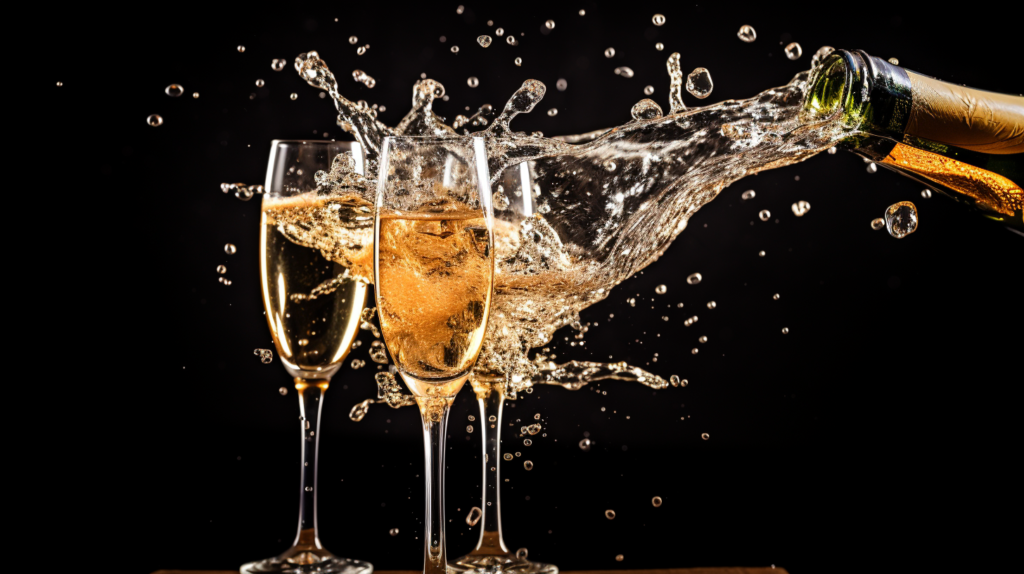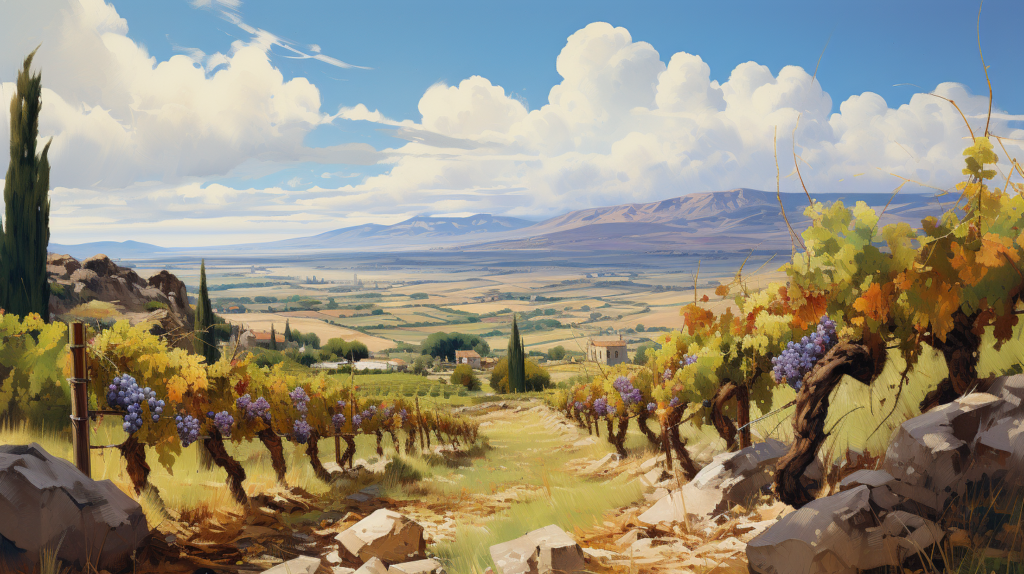When it comes to wine, time is a crucial element. The CONCEPT OF AGING WINE is shrouded in both mystery and allure, sparking curiosity among connoisseurs and novices alike.
This comprehensive guide dives deep into the heart of wine aging, exploring its intricacies and the factors that influence a wine’s potential to age gracefully.
Whether you’re a seasoned collector or a casual enthusiast, understanding the aging potential of wine can significantly enhance your appreciation of this timeless beverage.
UNDERSTANDING WINE AGING POTENTIAL
Wine aging, an exquisite journey through time, is a key aspect in elevating a wine’s character and complexity.
The potential for a wine to evolve and improve with age largely depends on several critical factors.
- Firstly, grape variety plays a pivotal role; some grapes, like Cabernet Sauvignon or Nebbiolo, are renowned for their aging prowess.
- Secondly, vintage quality—years with optimal growing conditions produce wines with better aging capacity.
- Thirdly, the winemaking process, including techniques like oak barrel aging, impacts the wine’s longevity.
- Fourth, Tannin levels also contribute significantly; higher tannins often indicate a greater aging potential.
Additionally, the wine’s acidity and sugar content are essential; both can preserve a wine and enhance its ability to mature gracefully. Storage conditions are equally crucial; consistent temperature, humidity, and minimal light exposure are vital for proper aging.
Understanding these elements can guide enthusiasts in building a cellar with wines that not only endure but flourish over time, offering a symphony of evolving flavors and aromas.
This knowledge is indispensable for anyone keen to explore the world of wine aging, unlocking the doors to a realm where time weaves its magic, transforming simple grape juice into a masterpiece of taste and tradition.
THE SCIENCE BEHIND WINE AGING
At its core, the aging of wine is a series of chemical reactions. Over time, compounds like tannins, acids, and sugars interact in the bottle, gradually changing the wine’s structure, flavor, and aroma. This process can soften harsher elements and bring forward more delicate, nuanced characteristics.
FACTORS INFLUENCING WINE’S LONGEVITY
Multiple factors contribute to a wine’s longevity or its ability to age well. These include the grape variety, the wine’s initial composition, environmental conditions during storage, and the winemaking practices employed. Understanding these factors is crucial to appreciating why some wines can age for decades while others are best enjoyed young.
KEY FACTORS DETERMINING THE AGING POTENTIAL OF WINE
Wine, a timeless beverage revered across cultures, possesses a unique aging potential, influenced by a myriad of factors.
The grape variety, pivotal in determining longevity, plays a crucial role; certain grapes, like Cabernet Sauvignon and Syrah, are renowned for their age-worthiness.
Tannin levels in the wine, derived from grape skins and oak barrels, act as natural preservatives, enhancing the wine’s ability to mature gracefully over time. The acid content, particularly in white wines like Riesling, is essential for maintaining freshness and balance as the wine ages.
Winemaking techniques, including fermentation methods and the duration of oak barrel aging, significantly impact the wine’s structure and aging capacity. The quality of the harvest, reflecting the year’s climate and terroir, is a critical determinant; exceptional vintages often produce wines with greater aging potential.
Lastly, storage conditions, including temperature, humidity, and light exposure, are vital for preserving the wine’s integrity over the years. A well-stored wine in optimal conditions can evolve beautifully, developing complex flavors and aromas that only time can unveil.
Understanding these key factors is essential for any wine enthusiast looking to explore the fascinating world of wine aging and its intricate nuances.
GRAPE VARIETY AND AGING PROSPECTS
Not all grape varieties are created equal when it comes to aging potential. Varietals like Cabernet Sauvignon, Merlot, and Chardonnay have a natural propensity for aging, thanks to their inherent structure and composition. On the other hand, grapes like Pinot Grigio or Gamay are typically more suited for early consumption.
THE ROLE OF VINTAGE IN WINE AGING
The year the grapes were harvested, known as the vintage, significantly impacts a wine’s aging potential. Factors like weather conditions, temperature fluctuations, and harvesting techniques during the specific vintage year all influence the wine’s initial quality and its ability to age gracefully.
WINEMAKING TECHNIQUES AND THEIR IMPACT ON AGING
The methods and techniques used in winemaking also play a crucial role in determining a wine’s aging potential. Practices like oak aging, fermentation methods, and even the type of closure (cork versus screw cap) can all influence how a wine evolves over time.
HOW TO STORE WINE FOR OPTIMAL AGING
Storing wine in an ideal manner is crucial for its optimal aging, a process revered by wine connoisseurs and enthusiasts alike. First and foremost, temperature control is paramount; maintaining a steady temperature around 55°F (13°C) prevents harmful fluctuations.
Equally important is humidity management; a level of 60-70% is recommended to keep corks in perfect condition, thus preventing oxidation or spoilage. Orientation of the wine bottle also plays a critical role; bottles should be stored horizontally to keep the cork moist, which is essential for long-term storage.
Additionally, minimizing light exposure, especially direct sunlight, helps in preserving the integrity of the wine. It’s imperative to ensure a vibration-free environment; excessive movement can disturb the delicate aging process.
For collectors, investing in a specialized wine cooler or cellar can provide the ideal conditions for aging, but even for casual enthusiasts, these guidelines can significantly enhance the aging potential of their wine collection.
Remember, the key to successful wine aging lies in a balance of these factors, tailored to the specific needs of your wine selection.
IDEAL CONDITIONS FOR STORING AGE-WORTHY WINES
The ideal conditions for aging wine include consistent temperature, appropriate humidity levels, minimal light exposure, and stability. We’ll break down each of these elements and explain why they are critical for preserving your wine’s integrity over time.
COMMON STORAGE MISTAKES TO AVOID
Even with the best intentions, common storage mistakes can significantly affect a wine’s aging process. From fluctuating temperatures to improper bottle orientation, learn what pitfalls to avoid and ensure your wine ages gracefully.
TASTING AND ENJOYING AGED WINES
Delving into the world of aged wines, one embarks on a sensory journey that transcends mere drinking, becoming an exploration of complex flavors and aromas. The art of tasting aged wines involves several key aspects: firstly, understanding the aging process and how it transforms the wine’s character.
As wines age, they develop richer textures and deeper flavors, ranging from bold, earthy notes to subtle, nuanced hints of fruits and spices. Secondly, proper storage is crucial; aged wines need to be kept in optimal conditions to preserve their quality and enhance their maturation.
This includes maintaining a consistent temperature and avoiding exposure to light and vibrations. Thirdly, the decanting process plays a vital role; for aged wines, particularly those with sediment, careful decanting ensures a smoother tasting experience. Moreover, selecting the right glassware is essential in appreciating the wine’s full bouquet.
The shape and size of the glass can significantly affect how wine aromas are released and perceived. Finally, pairing aged wines with food is an art in itself. The richness and complexity of these wines make them ideal companions for a variety of dishes, from hearty meats to delicate cheeses.
By considering these elements, enthusiasts can truly savor the exquisite experience of tasting and enjoying aged wines, turning each sip into a memorable moment.
THE EVOLUTION OF FLAVORS AND AROMAS IN AGED WINES
Aged wines develop complex flavor profiles and aromas that are not present in their younger counterparts. This section delves into the science behind this evolution and what to expect from different varietals as they age.
DECANTING AGED WINES: WHEN AND WHY
Decanting can significantly enhance the tasting experience of aged wines. Understand the importance of this practice, when to do it, and how it can unlock the full potential of a well-aged bottle.
EXPERT TIPS ON COLLECTING AND INVESTING IN AGE-WORTHY WINES
Engaging in the captivating world of wine collecting and investment can be both thrilling and profitable, especially when focusing on age-worthy wines. Initially, understand the wine market, which fluctuates based on vintage, rarity, and global demand. Explore varietals known for aging potential, like Cabernet Sauvignon, Bordeaux blends, or vintage Port.
Storage conditions are crucial; ensure a cool, stable environment and proper humidity. Diversify your portfolio by mixing regions and styles, adding value and stability. Engage with reputable dealers or auctions for authentic, well-preserved bottles. Taste regularly to appreciate the evolving profiles of aging wines, enhancing your understanding and enjoyment.
Monitor the market trends for optimal buying and selling moments. Remember, wine investing involves patience and passion, as the true value often emerges over years. With these expert tips, your journey into the enchanting realm of wine collection and investment promises both personal satisfaction and potential financial gain.
BUILDING A COLLECTION OF AGE-WORTHY WINES
Creating a collection of wines that will mature beautifully over time is an art. It involves understanding the varietals, regions, and vintages that are known for their aging capacity. Factors like tannins, acidity, and sugar content play crucial roles. Learn how to identify the right elements in a wine to ensure it ages well.
INVESTMENT CONSIDERATIONS FOR AGED WINES
Investing in aged wines isn’t just about buying expensive bottles; it’s about recognizing potential. We’ll discuss the importance of provenance, storage conditions, and market trends. Understand the intricacies of wine investment and how to gauge the long-term value of your collection.
CASE STUDIES AND EXAMPLES OF WINES WITH EXCEPTIONAL AGING POTENTIAL
In the fascinating world of oenology, certain wines stand out for their remarkable aging potential, a quality highly prized by connoisseurs and collectors alike. Notable among these are the Bordeaux reds, such as Château Margaux and Château Lafite Rothschild, renowned for their longevity and evolving complexity over decades.
Similarly, Burgundy’s Pinot Noirs offer an exquisite aging journey, with examples like Romanée-Conti and La Tâche demonstrating profound depth and flavor enhancement over time. Italian classics, notably Barolo and Brunello di Montalcino, also excel in aging, gaining richness and aromatic sophistication.
In the realm of white wines, German Rieslings stand out, particularly those from the Mosel region, known for their ability to age gracefully, developing honeyed, nutty characteristics while retaining a fresh acidity.
Vintage Port, with its robust structure and concentrated flavors, also ages magnificently, often reaching peak maturity after several decades. These wines, each a case study in the art of aging, exemplify the transformative power of time, evolving in complexity and offering a unique, ever-changing sensory experience.
ICONIC WINES KNOWN FOR THEIR LONGEVITY
Some wines are legendary for their ability to age. From the robust Bordeaux reds to the complex Burgundies, these wines have stood the test of time. We’ll explore these iconic wines, the reasons behind their longevity, and what makes them a coveted addition to any cellar.
SURPRISING FINDS: LESSER-KNOWN WINES WITH GREAT AGING POTENTIAL
Beyond the famous labels, there are hidden gems in the wine world that age remarkably well. Discover these surprising finds, from various regions and varietals, offering excellent aging potential without the hefty price tag. Learn how to spot these under-the-radar bottles that could be the stars of tomorrow.
Understanding the aging potential of wine is a journey that requires patience, knowledge, and appreciation for the transformative power of time. Whether you’re a seasoned collector or a curious enthusiast, the world of wine aging offers a fascinating glimpse into how a simple grape can evolve into a complex and exquisite beverage.
Remember, the key to enjoying aged wine lies not just in the bottle, but in the journey it takes to reach its full potential.
Cheers to the timeless art of wine aging!




